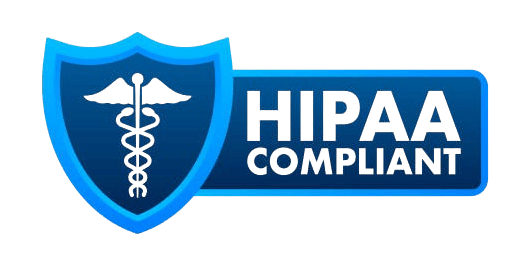What Is the HCFA 1500 Form? A Complete Medical Billing Guide for 2025

If you are in healthcare revenue cycle management or medical billing, you have most likely heard about the term “HCFA” which is used interchangeably with CMS-1500. But what does HCFA really mean and why is it relevant in 2025? The HCFA 1500 form remains a foundational document for submitting professional medical billing claims to Medicare, Medicaid, and private payers. Though officially replaced by CMS, the term “HCFA” continues to dominate billing conversations. This guide explores the HCFA form’s purpose, field-by-field breakdown, its role in payer communication, and why mastering it is still essential for providers and billing teams across the U.S.
BLOG OUTLINE
- Introduction
- What is the HCFA?
- Is HCFA the Same as CMS-1500?
- How HCFA Plays an Important Role in Medical Billing (Even Today)
- How HCFA Relates to Insurance Companies
- Impact of HCFA in Different States
- Understanding the HCFA 1500 (CMS-1500) Form
- How Many Boxes Are on the HCFA 1500 Form?
- What Does Each Box Refer to in the HCFA Form?
- What Is the Claim Number on a HCFA Form?
- How HCFA Relates to Insurance Companies
- State-Specific Impacts of HCFA in Medical Billing
- Common HCFA Claim Errors and How to Avoid Them
- Submitting the HCFA 1500 Form: Manual vs. Electronic
- Why HCFA Still Matters in 2025 and Beyond
- Frequently Asked Questions about the HCFA Form
Introduction
In medical billing in the U.S., terms often outlast the agencies that coined them and “HCFA” is a perfect example. If you have worked in healthcare revenue management, you have probably heard someone refer to the HCFA form, especially when discussing paper claim submissions. Likewise in 2025, this term is still relevant for billing software, payer guidelines, and daily provider conversations.
But what exactly is HCFA, and why does it still matter in today’s digital healthcare environment?
This guide breaks down everything you need to know about HCFA, including its origins, its relationship to CMS-1500 forms, and its lasting impact on insurance billing, claim workflows, and state-by-state policies. Whether you are a billing expert, a new provider, or part of an RCM team, understanding HCFA is not just helpful, it is essential to stay compliant in healthcare industry. Let’s begin with what HCFA actually stands for.
What is the HCFA?
HCFA stands for the Health Care Financing Administration. HCFA was a former federal agency created in 1977 under the U.S. Department of Health and Human Services (HHS). The mission of HCFA was to oversee and administer the nation’s largest public health programs i.e. Medicare and Medicaid, which provides medical coverage to elderly, low-income, and disabled individuals.
At that time, HCFA was assigned the responsibilities to:
- Managing Medicare reimbursement policies
- Partnering with states to implement Medicaid
- Regulating healthcare quality and utilization review
- Enforcing cost control measures and fraud prevention
- Creating claim processing standards and payment structures still used today
While HCFA no longer exists under that name, its influence continues to shape the healthcare billing management.
Key Facts about HCFA
| Attribute | Detail |
|---|---|
| Full Name | Health Care Financing Administration |
| Established | 1977 |
| Oversaw Programs | Medicare, Medicaid, and other federal health programs |
| Rebranded As | CMS (Centers for Medicare & Medicaid Services) in 2001 |
| Legacy in Billing | Introduced the original HCFA 1500 claim form |
Is HCFA the Same as CMS-1500?
This is one of the most common questions in medical billing: Is HCFA the same as the CMS-1500 form? The answer is not exactly but they are closely related. Let’s clarify the distinction:
HCFA
HCFA (Health Care Financing Administration) was the federal agency that originally developed the standardized medical claim form used by non-institutional providers (such as physicians, therapists, and outpatient clinics).
CMS-1500
CMS-1500 is the current name of that claim form, now maintained by the Centers for Medicare & Medicaid Services (CMS), the agency that replaced HCFA in 2001.
Why People Still Say "HCFA 1500"
Even though the form is officially called CMS-1500 for over two decades now but many providers, clearinghouses, and billing software systems still refer to it as the HCFA 1500. This is due to:
- Legacy terminology in billing offices and training manuals
- Payer documents that have not updated their language
- Familiarity among seasoned billers who used the form before CMS existed
So while HCFA refers to a former government agency, and CMS-1500 refers to a billing form, the two are historically linked and often used interchangeably in everyday billing practice.
✅ Quick Summary: “HCFA” is not the same as the CMS-1500 form, but it is the origin of it. The CMS-1500 is the modern version of the paper claim form that was created by HCFA.
For Insurance Credentialing, Medical Billing Services and other services
How HCFA Plays an Important Role in Medical Billing (Even Today)
Even though HCFA was officially replaced by CMS in 2001, its influence is deeply embedded in the structure of modern medical billing. From how claims are formatted to how reimbursements are processed, HCFA’s legacy shapes nearly every part of the billing cycle today.
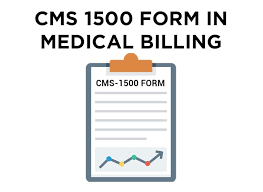
1. Foundation of Standardized Billing
HCFA established the original claim form which in today’s medical billing is referred as CMS-1500. The CMS 1500 is the national standard for non-institutional medical billing. This move helped create:
- Consistent expectations across all payers
- Easier auditing and reporting
- More efficient reimbursement workflows
Many of the billing systems, clearinghouses, and practice management platforms still follow the HCFA layout and logic, especially when submitting paper claims or transitioning to claims through electronic data intercharge (EDI).
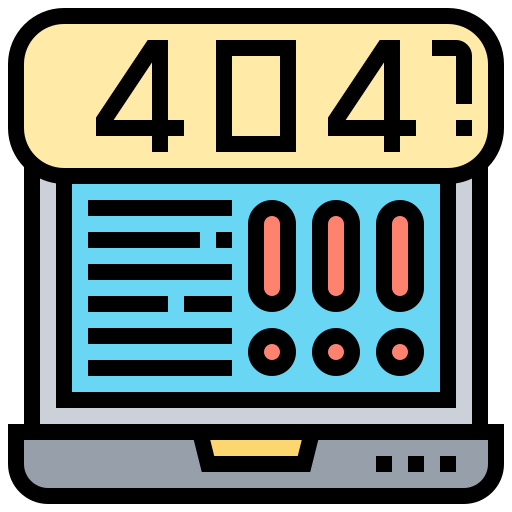
2. Standardization of Code Reporting
Under HCFA’s leadership:
- It became mandatory to use CPT, HCPCS, and ICD code for reimbursement.
- Diagnosis pointers (Box 24E) was introduced alongwith procedure linkage, and documentation rules.
- Use of Modifiers and place of service (POS) codes were introduced and made mandatory to assist payers in accurate claim processing and reimbursement. Explore list of all POS codes and learn what billing modifier is
- NPI tracking started being regulated.
These standards continue to drive billing accuracy and compliance with payer-specific rules.
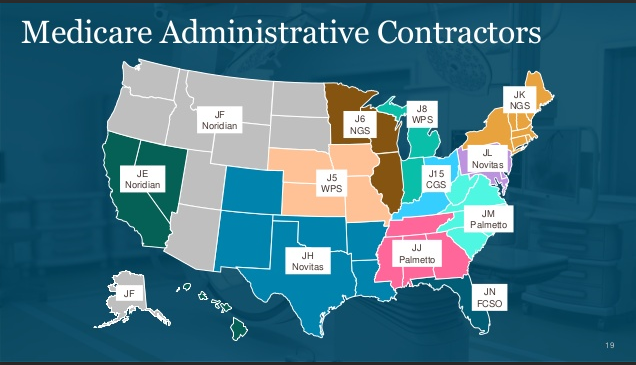
3. Basis for MACs and Payer Relationships
Medicare Administrative Contractors (MACs), the regional entities that process Medicare claims, were originally organized under HCFA and continue to operate under CMS today. Their roles include:
- Processing HCFA/CMS-1500 claims
- Enforcing medical necessity rules
- Educating providers on compliance
Private insurers often model their billing rules after these MAC-led CMS guidelines, meaning HCFA’s original structures continue to influence commercial billing standards too.

4. Ongoing Relevance in Education and Compliance
Billing certification exams (e.g., AAPC’s CPC or AHIMA’s CCS) still include HCFA form fields as part of their curriculum. HCFA’s terminology is also:
- Common in Medicare training manuals
- Found in payer documentation
- Used in audit letters and denial explanations
In Short
Even in 2025, knowing what HCFA stood for and how it laid the groundwork for today’s systems gives billers and providers an edge. It helps them understand:
- Why forms are structured the way they are
- How to prevent errors
- What payers expect in a clean claim
How HCFA Relates to Insurance Companies
Though the Health Care Financing Administration (HCFA) was a federal administrative agency and not an insurance company itself. However, its impact in handling public and private insurers medical claims is profound and still relevant today. It is pertinent to mention that HCFA laid the groundwork for standardized billing procedures which is followed by insurance companies across the country, regardless of whether they are administering Medicare, Medicaid, or commercial insurance plans.
🔗 1. HCFA Established the Framework for Payer Compliance
The rules and structures developed by HCFA around claim formatting, code usage, and medical necessity became the template claim processing and and insurers assess. For example:
- CPT/HCPCS and ICD-10 coding requirements were enforced by HCFA
- Modifier rules and diagnosis-to-procedure mapping were created to reduce claim abuse
- HCFA created the HCFA 1500 form, now called CMS-1500, which is used by mostly insurers
Today’s insurance adjudication systems are modeled after those early compliance frameworks developed under HCFA oversight.
🏦 2. Commercial Payers Still Require HCFA (CMS-1500) Formatting
Whether you are billing Blue Cross Blue Shield, Aetna, UnitedHealthcare, or state Medicaid, there are chances that they accept (or require) claims submitted using the CMS-1500 form, originally designed by HCFA. This includes:
- Field-level formatting based on HCFA’s 33-box structure
- Use of NPI numbers, taxonomy codes, and payer IDs
- Diagnosis code referencing in a pointer system (Box 24E)
In essence, HCFA’s structure became the unofficial universal language of insurance billing.
🔄 3. Medicare Rules Influenced Private Insurer Policies
Many commercial payers align their rules with Medicare’s National Coverage Determinations (NCDs) or Local Coverage Determinations (LCDs). These policies were originally created under HCFA to align clinical and billing criteria that insurers often mirror to:
- Streamline claim approvals
- Reduce administrative burdens
- Limit fraud and overbilling
For example:
- Time-based coding for psychotherapy
- Incident-to billing guidelines
- Use of modifier 25 or 59 for same-day procedures
By adopting HCFA/CMS-aligned rules, private insurers ensure consistency in provider expectations and reimbursement processes.
📁 4. Payers and Clearinghouses Use HCFA Standards for EDI
HCFA’s billing structure served as the basis for the electronic claim format known as ANSI X12 837P. While not a paper form, this digital version is:
- Modeled after the CMS-1500 layout
- Used by clearinghouses to transmit medical claims to insurance companies
- Required by most insurers for group practices and hospitals
Without HCFA’s foundation to standardize billing, electronic data interchange (EDI) systems would not function as smoothly or uniformly across the U.S. healthcare system.
🧠 In Summary
Although HCFA no longer exists in name, its claims management standards continue to guide insurance companies, clearinghouses, and billing software vendors. Understanding HCFA’s role helps providers:
- Navigate payer-specific requirements
- Improve clean claim rates
- Reduce denials based on format or code issues
The stronger your team’s grasp of HCFA-related form logic and terminology, the easier it becomes to communicate with payers and ensure timely reimbursement.
Impact of HCFA in Different States
While the HCFA (Health Care Financing Administration) was a federal agency, its influence is felt differently across U.S. states due to variations in Medicaid administration, payer networks, and billing regulations. Each state interprets and implements HCFA-originated standards—like the CMS-1500 form—through its own state-level Medicaid programs and commercial insurance frameworks. Understanding these differences can make or break successful medical billing workflows.
1. Medicaid Programs Are State-Specific but HCFA-Rooted
Each state operates its own Medicaid program, but all must comply with federal CMS (formerly HCFA) guidelines to receive funding. That means:
- All U.S. States use the CMS-1500 (formerly HCFA 1500) for professional claim processing.
- States must adhere to coding policies built upon HCFA’s original CPT/HCPCS structures.
- Coverage limitations are influenced by HCFA-era medical necessity rules but customized locally.
Example:
California’s Medi-Cal may require additional documentation or pre-authorization steps which are not required in Texas Medicaid even though both follow CMS-1500 formatting and HCFA-origin standards.
2. HCFA Form Compliance Affects Local Payer Participation
Some U.S. States strictly follow electronic claim submission in accordance with HCFA form accuracy, specifically to every field and character.
In states like:
- New York and Massachusetts, incorrect HCFA form entries can lead to automatic claim rejections.
- Florida requires payers to follow HCFA box instructions for both Medicare Advantage and Medicaid Managed Care plans.
Any error in Box 33 which refers to billing provider info or Box 24J which refers to rendering provider NPI can trigger denials due to state-enforced formatting precision.
3. Commercial Insurers May Apply HCFA Standards Differently by Region
While insurers like Aetna, Cigna, and UnitedHealthcare operate nationwide, their local claim review teams often implement state-level policy edits based on HCFA standards.
For instance:
- Modifier usage rules for behavioral health services may differ in Illinois vs. Georgia.
- Payers in rural states may be more lenient on telehealth fields due to access concerns, yet, rely on HCFA/CMS-1500 formats to process the claims.
4. State-Specific Credentialing and HCFA Box Dependencies
Certain HCFA boxes (like Box 32 for service location or Box 31 for provider signature) carry added significance in states with strict credentialing protocols.
Examples:
- Texas Medicaid may require Box 32 to match the practice’s credentialed site.
- Nevada payers reject claims if the supervising provider is not listed correctly in Box 17.
The relationship between state compliance and HCFA form fields is critical for clean claims and accurate reimbursement.
💡 Pro Tip for Billing Teams
When expanding your practice across states, do consider:
- Each Medicaid program interprets the CMS-1500 form
- Local payers apply state modifiers or place-of-service codes
- Specific HCFA boxes trigger edits unique to a payer or region
This knowledge gives your team a competitive edge in multi-state billing compliance.
Understanding the HCFA 1500 (CMS-1500) Form
The HCFA 1500, officially named the CMS-1500 form, is the standard health insurance claim form used by non-institutional providers. This includes physicians, therapists, mental health professionals, outpatient clinics, and other individual practitioners.
Key Points
How Many Boxes Are on the HCFA 1500 Form?
The HCFA 1500 form contains a total of 33 numbered fields, some of which are divided into subsections (e.g., Box 24A–24J is a multi-part field for line-item services).
Breakdown:
🟦 33 primary fields
🧩 Several contain sub-fields to capture detailed billing data (dates, codes, charges, units, NPI, modifiers, etc.)
Important Note
➡️ Not all fields are used for every claim. Providers should only fill out fields relevant to the payer, service type, and provider type. Overpopulating or misusing fields can result in denials or processing delays.
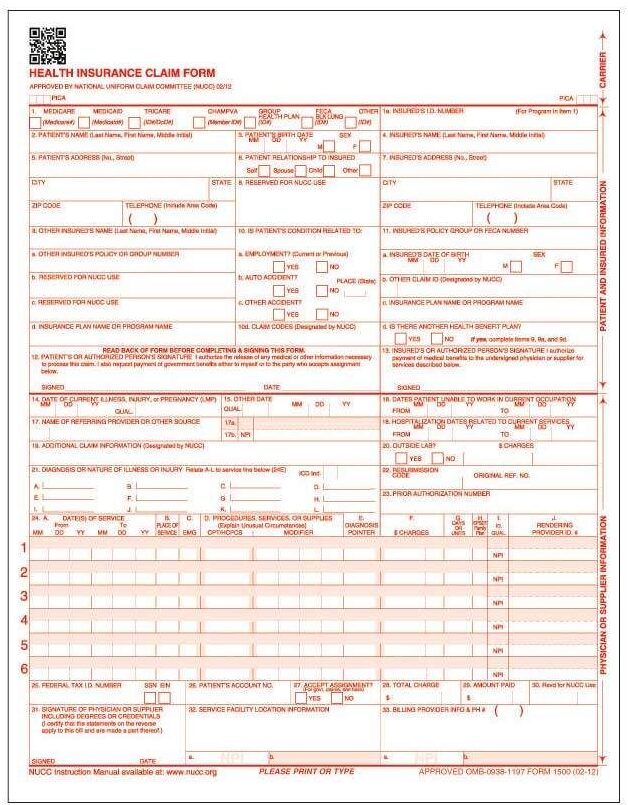
What Does Each Box Refer to in the HCFA Form?
| Box No. | Field Label | Description / Use | Example Input |
|---|---|---|---|
| 1 | Insurance Type | Indicates type of insurance coverage | X in “Medicare” |
| 1a | Insured’s ID Number | Patient’s insurance policy or Medicare number | 123456789A |
| 2 | Patient’s Name | Full name of patient receiving services | John Doe |
| 3 | Patient’s Birth Date/Sex | DOB and gender | 01/01/1970, M |
| 4 | Insured’s Name | Name of the insurance policyholder (if different from patient) | Jane Doe |
| 5–11 | Patient and Insurance Info | Includes address, relationship, group ID, condition codes, etc. | Varies |
| 17 | Referring Provider | Required when services are referred | Dr. Emily Carter, NPI: 1234567890 |
| 21 | Diagnosis or Nature of Illness (ICD-10) | Primary and up to 12 ICD-10 diagnosis codes | F41.1, M54.5 |
| 24D | Procedures, Services, or Supplies | CPT/HCPCS code with up to 4 modifiers per line | 90837, 95 |
| 24E | Diagnosis Pointer | Links procedure code to the relevant diagnosis code from Box 21 | A, B, C |
| 24F | Charges | Fee charged for the line-item service | $150.00 |
| 24G | Days or Units | Number of units/time (as applicable per code) | 1 |
| 25 | Federal Tax ID | SSN or EIN of the billing provider | XX-XXXXXXX |
| 26 | Patient’s Account Number | Internal patient ID for provider’s recordkeeping | PT-022345 |
| 27 | Accept Assignment | Indicates whether provider accepts payer’s assignment/payment terms | YES |
| 28 | Total Charges | Total billed charges for all services listed in Box 24 | $450.00 |
| 31 | Signature of Physician/Provider | Must include provider signature or notation “Signature on File” | Signature on File |
| 32 | Service Facility Location | Location where services were rendered | 123 Main St, Houston, TX 77001 |
| 33 | Billing Provider Info & Phone # | Billing entity’s name, address, and contact | MedStates, 800-555-1234 |
Critical Boxes to Prioritize
- Box 21: ICD-10 codes — Must reflect medical necessity.
- Box 24D: Procedure (CPT/HCPCS) codes with correct modifiers.
- Box 33: Billing provider details — Must match payer credentialing records.
- Box 25 & 27: Can trigger rejections if mismatched with payer files.
What Is the Claim Number on a HCFA Form?
The claim number on a HCFA form also called as the Claim Control Number (CCN) or Payer’s Claim Number serves as the unique identifier assigned to a submitted claim by the insurance company. This number is crucial for tracking, communicating, and resolving any issues related to the claim.
Where Is the Claim Number Found?
Unlike provider-generated information (e.g., patient demographics or diagnosis codes), the claim number is not initially assigned by the provider or entered on the original HCFA (CMS-1500) form. Instead, it is:
- Generated by the payer after the claim is received and processed.
- Typically visible on the Explanation of Benefits (EOB) or Electronic Remittance Advice (ERA).
- Used for referencing the claim during appeals, audits, or follow-ups.
What Does the Claim Number Do?
| Function | Description |
|---|---|
| Tracking | Allow providers to track the claim status across clearinghouses and payers. |
| Dispute Resolution | Essential when filing an appeal against denied claims or requesting reconsideration. |
| Coordination of Benefits (COB) | Helps insurer determine if they are primary or secondary payers. |
| Audit Trail | Offer a digital paper trail for compliance, audits, and payer correspondence. |
Claim Number is Not a Patient Account Number
While both numbers appear on EOB:
- Claim Number = Assigned by the insurance company (payer-side).
- Patient Account Number = Assigned by the provider’s billing system (provider-side).
Many denials and follow-ups are delayed due to this confusion. Ensuring your staff understands the distinction speeds up payer communication and appeal processing. Payers like Medicare, Medicaid, and Blue Cross Blue Shield each assign claim numbers differently. Including this number in appeals, resubmissions, and reconsideration requests is considered an industry best practice.
How HCFA Relates to Insurance Companies
The HCFA form (CMS-1500) acts as a critical communication bridge between healthcare providers and insurance companies. It standardizes how healthcare claims are submitted, ensuring all required data for claim adjudication is presented in a uniform, payer-recognized format.
The Link Between Providers and Payers
When a provider provides medical services to a patient and the claim is submitted to insurance company, the HCFA form becomes the formal document that conveys:
- Who provided the care
- What services were rendered
- When and where services were provided
- What medical necessity supports those services (diagnosis)
- How much is being charged
This form ensures the insurance company has all the data needed to evaluate, process, and reimburse the claim accurately.
Why Insurers Rely on HCFA Forms
| Purpose | How It Impacts Billing |
|---|---|
| Validate medical necessity | Through ICD-10 codes linked to CPT/HCPCS services (Boxes 21 & 24D). |
| Determine coverage eligibility | Based on patient info (Box 1-13) and provider credentials (Box 25-33). |
| Adjudicate reimbursement | Using modifiers, place of service (POS), units, and billed charges. |
| Track claim status | Assigning claim control numbers and linking to Explanation of Benefits (EOB). |
Coordination With Insurance Carriers
HCFA also plays a pivotal role in:
- Coordination of Benefits (COB): Ensuring primary vs secondary payers are correctly billed.
- Utilization Review: Payers may review the codes listed for medical appropriateness.
- Fraud Prevention: Structured data format helps detect improper billing patterns or duplicate submissions.
Pro Tip for Medical Billing Teams
State-Specific Impacts of HCFA in Medical Billing
While the HCFA form (CMS-1500) maintains a standardized structure nationwide, the way it is processed, reviewed, and reimbursed can vary significantly by state. These variations originate from differences in Medicaid programs, state insurance regulations, payer networks, and billing rules.
🏥 Medicaid and HCFA: Not One Size Fits All
Each state runs its own Medicaid program with unique claim submission protocols and coverage criteria even though HCFA/CMS-1500 form is used across all the U.S. States.
| State | Unique HCFA Billing Consideration |
|---|---|
| California | Medi-Cal requires special Treatment Authorization Requests (TAR) with HCFA. |
| New York | Medicaid claims may require additional attachments or documentation identifiers. |
| Texas | HCFA must align with TMHP guidelines or else wrong taxonomy codes can trigger denial. |
| Florida | May require NPI crosswalks if rendering and billing provider differ. |
🗺️ Commercial Insurance Rules Vary by State
Private insurance carriers often comply with state insurance department mandates, affecting how they interpret and reimburse claims submitted via HCFA.
Examples include:
- Timely filing limits may vary (e.g., 90 days in some states, 180 in others).
- Telehealth modifiers (like 95 or GT) might be required or denied depending on local policy.
- Balance billing restrictions impact what providers can charge after payer reimbursement.
🧾 Credentialing and HCFA: A State-by-State Puzzle
In many states, claims on HCFA can be rejected if the provider:
- Is not state-licensed or registered with Medicaid, does not matter if they are credentialed nationally.
- Lacks proper taxonomy codes, group NPI linkage, or state-specific CAQH data.
- Fails to include state-assigned identifiers or third-party administrator details.
📌 Key Takeaway for Billing Teams and Providers
➡️ State billing nuances can override national HCFA standards.
➡️ Always verify payer policies, state Medicaid manuals, and clearinghouse requirements before submitting claims.
➡️ Consider maintaining a state-specific HCFA checklist to reduce errors and boost reimbursement speed.
Common HCFA Claim Errors and How to Avoid Them
⚠️
Submitting claims using the HCFA (CMS-1500) form requires meticulous attention to detail. Even minor oversights can result in claim denials, delays, or underpayments. Understanding and addressing the most common errors can significantly improve your clean claims rate and revenue cycle performance.
Top 7 HCFA Claim Errors
| Error | Description | Impact |
|---|---|---|
| Missing or Invalid NPI | Fields 24J, 33a not completed properly. | Claim may be rejected or routed incorrectly. |
| Incorrect ICD-10 Code Version | Box 21 misused or diagnosis codes not updated for current fiscal year. | Immediate denial or underpayment. |
| Mismatched Modifiers | Modifiers like 25, 59, or 95 used incorrectly in Box 24D. | Can flag claim for medical necessity audit or denial. |
| Missing Authorization Numbers | Pre-auth not noted in Box 23. | Auto-denial for services requiring prior authorization. |
| Improper Patient Demographics | Errors in Box 2–5 (name, DOB, gender). | Claim rejections due to identity mismatch. |
| Invalid Place of Service Code | Box 24B code doesn’t match procedure (e.g., POS 11 vs 02 for telehealth). | Reimbursement discrepancy or outright denial. |
| Unlinked Diagnosis and Procedure | No pointer from CPT to relevant ICD code in Box 24E. | Claim gets flagged for incomplete medical necessity documentation. |
How to Avoid These Errors
- Use Practice Management Software (PMS) with built-in HCFA validation.
- Audit your claims weekly to address rejection trends.
- Keep payer-specific rules handy for high-volume insurance companies.
- Continuous training and learning of billing staff in accordance with CMS/AMA updates.
- Use electronic clearinghouses that pre-scrub for HCFA form compliance.
- Confirm patient insurance eligibility and pre-authorizations before scheduling for services.
- Reconcile Box 24 and 33 for consistent rendering and billing provider NPI data.
❓
The Benefit: Better Cash Flow, Less Rework
Eliminating common HCFA form mistakes leads to:
- Higher clean claims submission rate
- Fewer payer rejections and delays
- Lower accounts receivable (AR) days
- Enhanced provider satisfaction
📈
Submitting the HCFA 1500 Form: Manual vs. Electronic
In 2025, most providers submit claims electronically using 837P EDI files, but there are still important scenarios where paper HCFA 1500 forms are required.
Submission through EDI
- Faster processing
- Reduced error rates
- Preferred by most payers
- Routed through clearinghouses (e.g., Availity, Change Healthcare)
When Paper Submission is required
- Secondary insurance that does not accept EDI
- Corrected or resubmitted claims (with modifiers or added notes)
- Out-of-network claims requiring physical attachments
- Rural or legacy clinics with limited internet connectivity
💡 Tip for Providers: Always check payer-specific requirements; some insurers request paper forms for coordination of benefits or retro-authorized visits.
Why HCFA Matters in 2025 and Beyond
Despite being a legacy term, “HCFA” continues to play an important role in medical billing in 2025. HCFA still matters, because:
- Many clearinghouses, providers, and payers still refer to CMS-1500 as “HCFA”
- Billing platforms often label the claim form as HCFA
- EHR templates and billing workflows are often mapped to HCFA fields
- Serves as a shared language between payers, billing teams, and providers.
🟩 Takeaway: Whether you are building RCM workflows, training a new billing team, or auditing claim submissions, understanding the HCFA form is critical to financial success and compliance.
Frequently Asked Questions about the HCFA Form
To wrap up, here are the most common provider and billing team queries about the HCFA (CMS-1500) form—answered for better understanding

